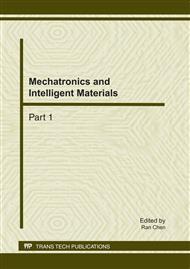p.1133
p.1137
p.1142
p.1147
p.1152
p.1157
p.1162
p.1167
p.1172
Experimental and Strength Analysis of the Trapezoidal Threaded Connection of Large-Scale Steel Tie Rod
Abstract:
Steel tie rods are very important load-carrying components in places where high pre-stresses are required, such as in long-span buildings, docks, bridges and stadiums. Steel tie rods are connected by threaded connections. The bearing capacity of a steel tie rod is determined not only by the strength of rod’s body alone, but also by the strength of threaded connection. This paper reports the results of the full-scale tensile rupture experiments on a LG100-00 steel tie rod with trapezoidal threaded connection. The full-scale tensile rupture experiments were carried out to test the maximum axial working load under different numbers of turns of trapezoidal thread engagement. The minimum number of turns of trapezoidal threaded engagement such that the thread teeth do not fail in shear and bending is determined by the experiments and finite element analyses. The equivalent stress distribution and contact pressure on the engaged thread teeth under different axial loads are analyzed and compared. The concordant comparison provides strong guidelines and support for the design and fabrication of steel tie rods in practical operations.
Info:
Periodical:
Pages:
1152-1156
Citation:
Online since:
February 2011
Authors:
Price:
Сopyright:
© 2011 Trans Tech Publications Ltd. All Rights Reserved
Share:
Citation:


